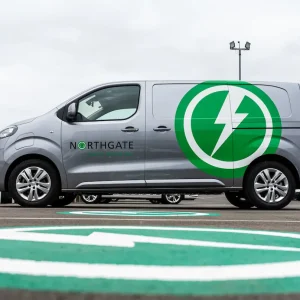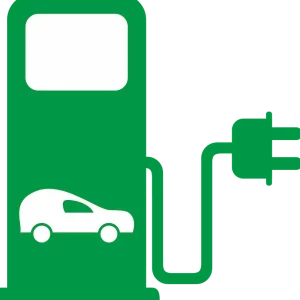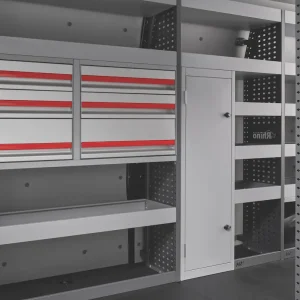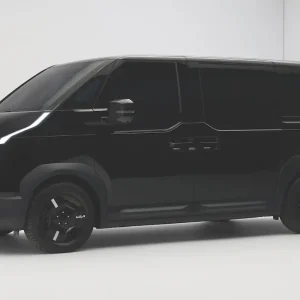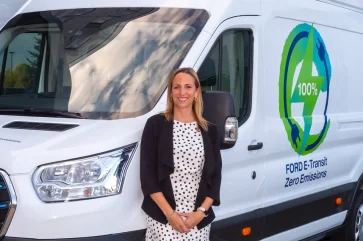
Next year will see van makers obliged to ensure that 16% of the new vehicles they sell are zero-emission, up from 10% this year. If they fail to do so, then the government will zap them with an £18,000 fine (up from £9,000 this year) for every light commercial that goes over the barrier.
The percentage laid down by the Zero Emission Vehicle (ZEV) mandate then steadily escalates, to 70% by 2030. Come 2035 sales of non-zero-emission vans will have to end.
The bad news for company executives is that light commercial customers remain determinedly wedded to diesels.
Sales of electric vans were down 7% this year at the time of writing, according to the latest registration figures compiled by the Society of Motor Manufacturers and Traders (SMMT). It predicts they will account for just 6.6% of sales at up to 3.5 tonnes this year, having revised its expectations downwards.
Says the SMMT: “Mandated targets for a van-suitable charging infrastructure are needed fast, while the Plug-In Van Grant must be maintained beyond April 2025 if more businesses are going to decarbonise.
Strong orders
If Ford of Britain commercial vehicle director, Mandy Dean, is worried about this scenario, then she’s doing a good job of not showing it. “We’ve got a good, strong order book for the new electric E-Transit Custom,” she reports.
An electric version of the latest Transit Courier is due in early 2025, and this year’s Commercial Vehicle Show witnessed the launch of an extended-range option for the electric E-Transit, said to be good for 249 miles.
Dean believes that part of the reason for the slow switch to electric is the confusion caused by the previous government when it changed the cut-off date for combustion engine sales from 2030 to 2035.
She would like to see the former target reinstated. “It would help the industry hugely,” she contends.
A holistic approach
Telling businesses that they would no longer be able to buy a new diesel van in six years’ time would certainly concentrate minds, and might prompt them to start thinking about the charging infrastructure they will need to install when they do go electric. Ford has developed a variety of packages, which includes charging hardware for depots and the software required to manage it, home charging solutions, and the roll-out of the Blue Oval public charging network.
“We’re helping customers make the transition, we’ve got to persuade them to make the switch,” she says. “By using the Ford Pro E-Switch Assist tool, a fleet can determine what percentage of its vans could move to electric today.”
The percentage could be higher than fleet managers might suppose. “There’s a lot of misinformation out there,” she says.
Some of it centres around range limitations, and while this may be an issue for some businesses – “it’s something we need to be upfront about” – many others should be able to cope easily.
“On average van drivers do no more than 60 miles a day,” Dean points out. “They can get 200 miles out of a Ford electric van between recharges, even in cold temperatures.”
While the upfront cost of battery vans may be steep, their day-to-day costs are not, Dean says, because you are paying less for the energy you use compared with diesel, and maintenance costs are lower. “You’ve got fewer moving parts,” she observes.
Considering lead times
New electric light commercials might become easier to obtain than their diesel counterparts thanks to the pressures imposed by the ZEV mandate.
Order one from Ford now and you would be facing an 18 to 20 week wait if it had to be ordered from the factory. Order the equivalent diesel from the factory and you could be waiting for up to 30 weeks.
Ford is also offering plug-in hybrid vehicles (PHEVs) as a solution for customers who may not be quite ready to make the switch to pure electric, although demand for the latter is turning out to be greater than for the former says Dean.
The latest Custom is available with PHEV technology and so is the new Transit Connect, although it is not being marketed in full electric guise. Now arriving at dealerships, it is a close cousin to Volkswagen’s Caddy and is one of the fruits of a joint venture between Ford and VW.
Marketing it as a PHEV looks like a way of distinguishing it from the new Transit Courier. The two vehicles are close in size, but the latter is not being sold with a PHEV option.
A PHEV Ranger pick-up (a close cousin to VW’s Amarok) is scheduled for launch at the IAA Transportation show in Hanover and should be here early next year.

